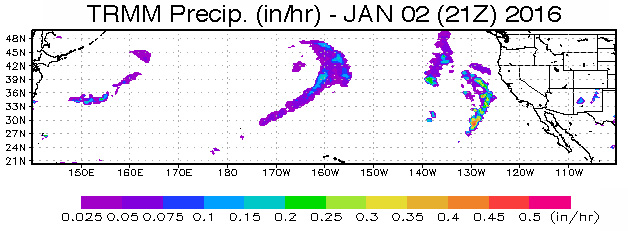El Niño is a phenomenon in which the sea surface temperatures (SSTs) in the central and eastern tropical Pacific Ocean are warmer than average. Scientists look at the average SST in the boxes in the image below (called Niño1-4 regions) to determine whether an El Niño event is happening. The opposite of El Niño is La Niña, which occurs when SSTs are cooler than average in the same region.
 In the transition from a normal year to El Niño the trade winds weaken and even reverse allowing the warm water in the west to flow eastward towards the Central and Eastern Pacific bringing the convective storms with it. Areas of the Eastern Pacific tend to get more rain while those if the Western Pacific receive less. See our Global effects page to see how a climate phenomena in the Pacific Ocean can effect the weather globally.
In the transition from a normal year to El Niño the trade winds weaken and even reverse allowing the warm water in the west to flow eastward towards the Central and Eastern Pacific bringing the convective storms with it. Areas of the Eastern Pacific tend to get more rain while those if the Western Pacific receive less. See our Global effects page to see how a climate phenomena in the Pacific Ocean can effect the weather globally.
El Niño and La Niña evolve year-round, but the biggest changes in SSTs tend to peak during the winter in the northern hemisphere (the December-January-February months). El Niño gets its name from South American fishermen, who noticed the changing ocean temperatures around Christmas time and referred to the phenomenon as “El Niño,” the Spanish term for Christ child.
El Niño and La Niña are also referred to together as the “Southern Oscillation,” which was a term coined by Sir Gilbert Walker when he studied sea level pressures and how they oscillates between high and low in the tropical Pacific Ocean. Collectively, scientists refer to this phenomenon as ENSO, or the El Niño-Southern Oscillation. Note the word oscillation means ocean temperatures tend to oscillate back and forth, from El Niño to La Niña or neutral conditions and back again, and this occurs on a time scale of about 3-5 years.




